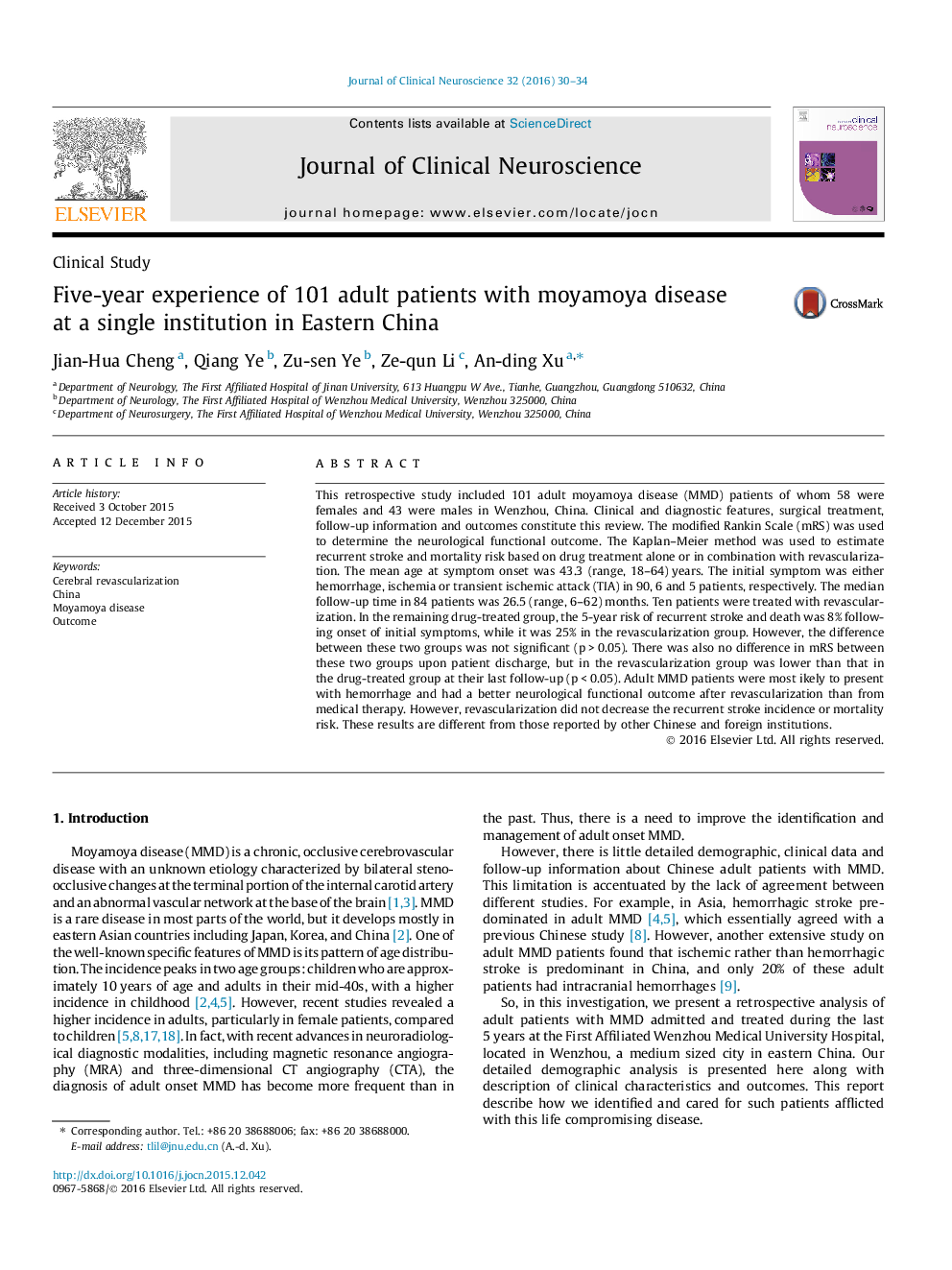| کد مقاله | کد نشریه | سال انتشار | مقاله انگلیسی | نسخه تمام متن |
|---|---|---|---|---|
| 3058038 | 1580284 | 2016 | 5 صفحه PDF | دانلود رایگان |
• Adult moyamoya disease (MMD) patients most commonly present with hemorrhagic stroke.
• Adult MMD patients have a better neurological functional outcome after revascularization than with medical therapy.
• Revascularization does not decrease recurrent stroke incidence or mortality risk.
This retrospective study included 101 adult moyamoya disease (MMD) patients of whom 58 were females and 43 were males in Wenzhou, China. Clinical and diagnostic features, surgical treatment, follow-up information and outcomes constitute this review. The modified Rankin Scale (mRS) was used to determine the neurological functional outcome. The Kaplan–Meier method was used to estimate recurrent stroke and mortality risk based on drug treatment alone or in combination with revascularization. The mean age at symptom onset was 43.3 (range, 18–64) years. The initial symptom was either hemorrhage, ischemia or transient ischemic attack (TIA) in 90, 6 and 5 patients, respectively. The median follow-up time in 84 patients was 26.5 (range, 6–62) months. Ten patients were treated with revascularization. In the remaining drug-treated group, the 5-year risk of recurrent stroke and death was 8% following onset of initial symptoms, while it was 25% in the revascularization group. However, the difference between these two groups was not significant (p > 0.05). There was also no difference in mRS between these two groups upon patient discharge, but in the revascularization group was lower than that in the drug-treated group at their last follow-up (p < 0.05). Adult MMD patients were most ikely to present with hemorrhage and had a better neurological functional outcome after revascularization than from medical therapy. However, revascularization did not decrease the recurrent stroke incidence or mortality risk. These results are different from those reported by other Chinese and foreign institutions.
Journal: Journal of Clinical Neuroscience - Volume 32, October 2016, Pages 30–34
